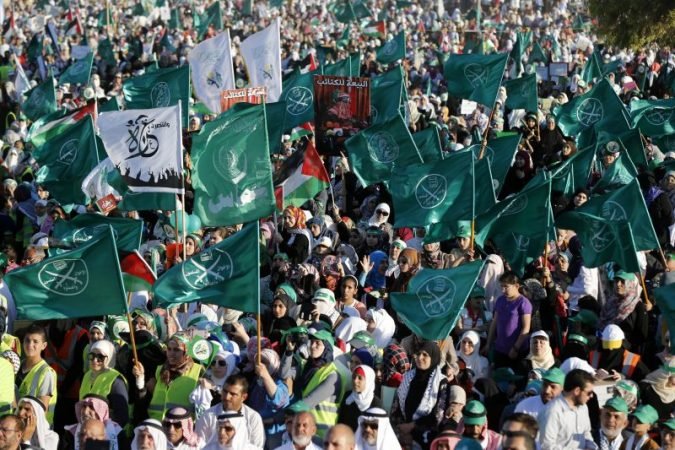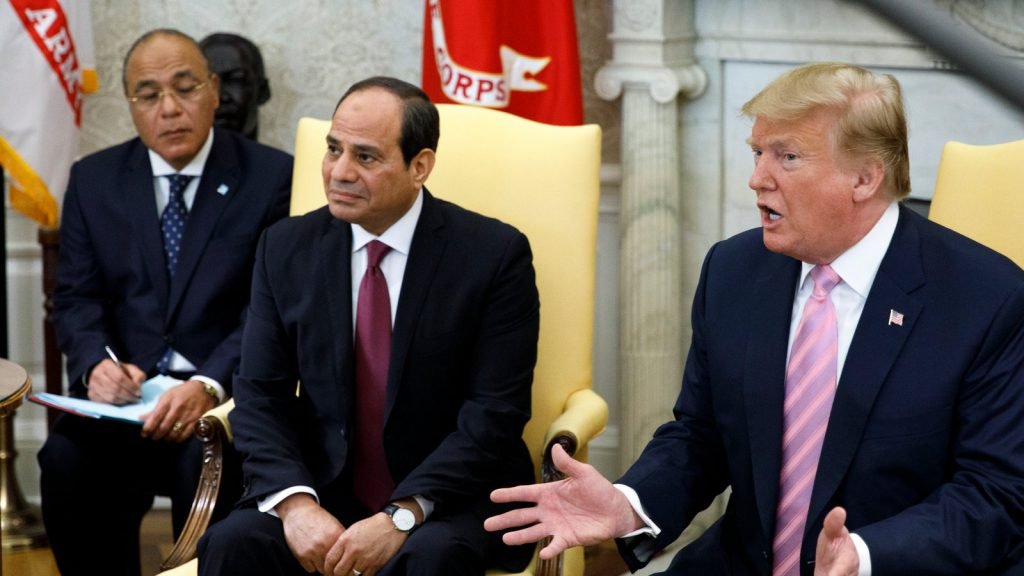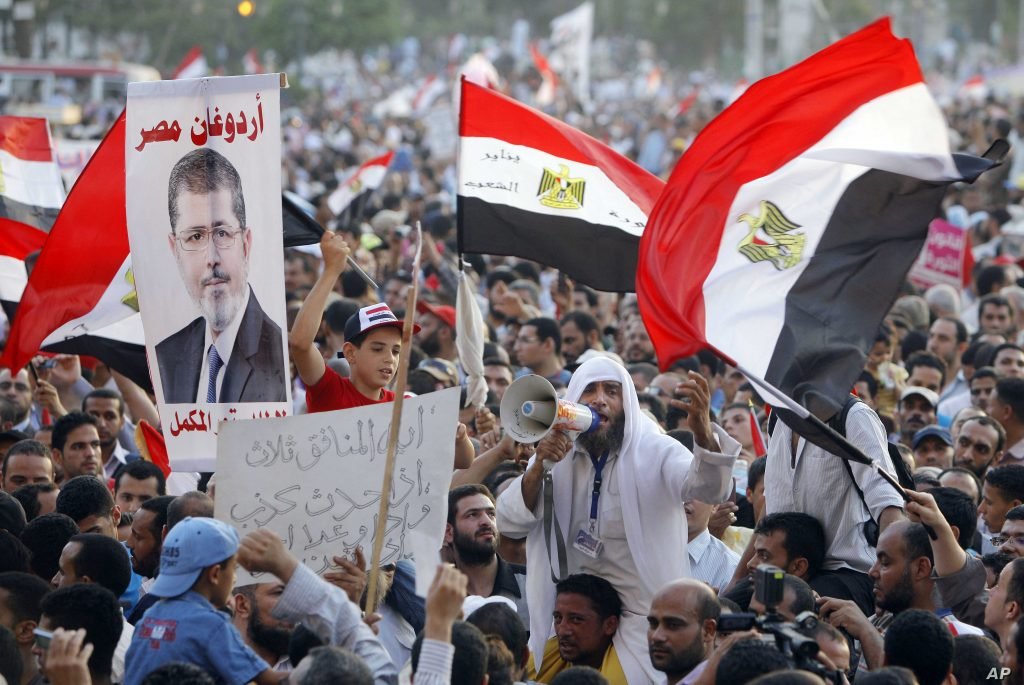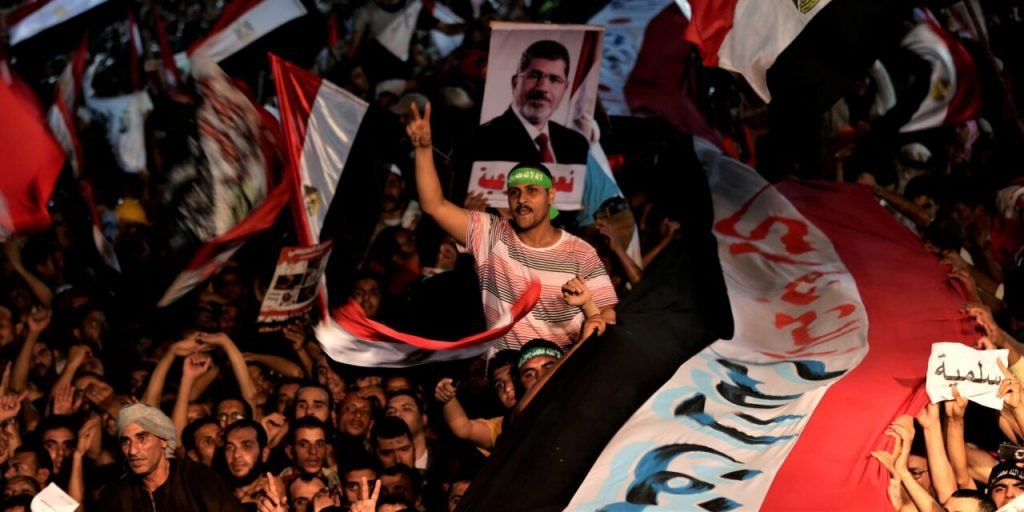How to Approach the Muslim Brotherhood

The Muslim Brotherhood Controversy
The Trump administration continues to ruminate over the status of the Muslim Brotherhood as an international terrorist organization, which sparks a major debate between government officials. When Egyptian President Abdel Fattah el-Sisi visited the White House in 2019, he persuaded President Trump to join them in labelling the Brotherhood as a terrorist organization. However, State Department bureaucrats and officials in the Pentagon argue that the Muslim Brotherhood does not meet the legal requirements of a terrorist group (Is the Muslim Brotherhood a Terrorist Group?, 2019). They argue that the network has not explicitly conducted terrorism under the name of the Muslim Brotherhood. They refer to the network as a seamless movement with chapters that follow different rules based on its beliefs; supporting or condoning violent extremism. Thus, the grey area becomes the ambiguity of what affiliations presume the network responsible for related terrorist activities.

The sporadic opinions on this matter make it a sensitive topic for international relations. In a political stance, deeming them as terrorists will provoke arguments and distaste for the United States from countries that disagree. Labelling the Brotherhood as a terrorist organization might deteriorate relationships between the United States and foreign allies that collaborate with the Brotherhood. Countries, like Turkey and Iran, that embrace the Brotherhood may refuse to further conduct business with the United States. The dilemma at stake is whether the United States should designate the Brotherhood as a terrorist group because of potential political and economic consequences that may arise. The United States policy plays a critical role in taking the lead on the decisions of every modern, pro-American Arab regime. Their decision influences those of regimes that support the United States, which is why the decision of the administration is so important.
The Brotherhood Emergence
To understand contemporary Islamic revival, it is important to unpack the development of the Muslim Brotherhood, which emerged in 1928. The evolutionary process of this organization consists of shifting Islamic philosophical aims and objectives (Milestones, pp.186). From its early development, founder Imam Hasan al Banna (1906-1949), advocated the need to replace Arab regimes to that of the original principles of Islam. Muslim Brotherhood emerged as a response to the socio-political conditions in Egypt at that time, where Imam al Banna countered secular liberal principles through Ikhwan (brotherhood). He was concerned with the diminishing reinforcements of Islamic teachings in Egypt that were influenced by the colonization of imperial nations and felt that believers had to strengthen their forces. He blamed Western democracy for corrupting Islamic philosophy, so his mission became to replace the existing state with a progressive Islamic order to end Western domination. Imam al Banna contended that only through an Islamic order can Muslims defend and recover themselves from foreign colonization.

Sayyid Qutb (1906-66) is a more modern influential leader in the organization that has immensely shaped perceptions of Islam. His ideas were aligned with those of Imam al Banna, except he supplemented the justification of martyrdom and revolutionized the movement through scripture. His evangelical writings inspired Islamic movements in the Muslim world because of its definitive posture and comprehensible literacy. His scripture included political and social poetry, articles, criticisms, with Milestones being his ultimate success. Milestones instantly became popular in Egypt because of its argument that Islamic adherents historically face a threat of Jahiliyyah (ignorance). He offered Jihad as a strategy to defeat this ignorance, which then became the foundation for today’s Islamic resurgent movements.
Currently, the Brotherhood continues the legacy of Imam al Banna and Qutb of distaste for Western nations and political goal of overthrowing non-Islamic governments. Believers detest any society (i.e. communists, capitalists, nationalists, other Muslims) that does not obey the wholly Sharia (laws of Islam) (A History of the Arab Peoples, pp. 445). Further, any secular Arab regime (i.e. Bahrain, Egypt, Iraq, Syria, the United Arab Emirates) that does not follow the Sharia are deemed traitors to Islam and ultimately targets for Jihad (holy war). Therefore, the controversy over whether the Muslim Brotherhood constitutes terrorism should cease with the examination of Qutbist ideologies, which shape this terrorist network. The ideology that should be highlighted for its resemblance to Islamic terror groups, like al Qaeda, is the advocacy for exhausting any means, including jihad, violence, and martyr, to rectify false beliefs and removing distractions from accepting Islam (ibid., pp. 445). The root of the ideologies embraced today by the network influence the violent extremism that is an extension of it, which makes it a global threat.
A History of Violent Extremism
Muslim Brotherhood and its affiliates centre their violence against “unjust and secular rulers” in Arab regimes. When they emerged in the 1930s, their violence was directed towards Jewish Egyptians because of their rage with the presence of Jews in Palestine. Simultaneously, they initiated violence towards British forces in Egypt due to opposition of Western states. In the midst of these acts of violence, Hasan al Banna promoted “The Art of Death”- a philosophy that incites any death on behalf of a cause is a noble, Muslim one. As a leader of the network, he justified violence when it was related to fighting for Islam. This concept is similarly found in other jihadi terrorist organizations, like ISIS, where martyrdom is glorified. The culture of “art of death” continues to impose danger among innocent civilians all over the world today.

Another targeted group that the Brotherhood has historically either attempted or successfully assassinated is Egyptian key leaders. Between the 1940s to early 2000s, the Brotherhood commonly used weapons as tactics to kill them. In 1948, they assassinated Egyptian Prime Minister Mahmud al-Nuqrashi. In 1954, they attempted to assassinate President Gamal Abdel Nasser. In 2014, they assassinated an Egyptian brigadier general and colonel as retribution for the dismissal of Brotherhood President Mohamed Morsi (Two Officers Killed by Militants, Egypt Says, 2014). The common trend in their targets were indicated to be top leaders against the Brotherhood.
In recent years, the network shifted its tactics from weaponry to explosives. However, suspicions of related crimes are commonly pinpointing Hasm, a militant branch of the Brotherhood. In 2016, they detonated a bomb geared towards Egyptian security forces, killing six and injuring three. In 2017, Hasm launched an explosion on Myanmar’s embassy for their treatment towards Rohingya Muslims (Sunni Islamists). It is suspected that in 2018, Brotherhood members detonated a bomb to attack Major General Mostafa al-Nemr. As of 2019, there are two other bomb-related incidents that occurred in Egypt that were allegedly caused by Hasm. The concern of the current trend related to the Brotherhood is the rise in bombings caused by their militant branch. While other members may oppose violence, the militant wing of the network is emerging as a threat to Egypt. The violent extremism inflicted by Hasm attributes a terroristic reputation to the Muslim Brotherhood, which led to the implications that Egyptian President el-Sisi imposed on President Trump last year.
A Way Forward
The root of the ideologies inherited in the Muslim Brotherhood, especially those that condone martyr and violence, may regard it as a terrorist network. Additionally, the violent extremism executed by their militant branch augments the argument that the Muslim Brotherhood creates terror. Examination of their change of patterns in tactics and targets over the past century implies that the Brotherhood will transform again. There should be no doubt that members who practice violent extremism may branch out to other Arab regimes and even Western States. After all, they have opposed both dominions since the emergence of their group; no one is safe from the violence that may arise. Ambassador Yoram Ettinger, an insider on US-Israel relations, attests that the network be outlawed in the United States, even if it is not politically convenient. This action would send a clear message facing the threat of the Brotherhood, signalling perseverance to end the violence that is influenced by their past leaders. Ambassador Ettinger suggests that limiting a nation to convenience does not resolve conflict. In other words, the United States cannot only concern itself with political consequences because it would just overlook the ongoing threat. Dismissing blame on Brotherhood affiliates for terrorist attacks empowers them to grow more lethal. Therefore, the United States should avoid the growth of violent extremism from Brotherhood members by labelling them as a terrorist network.


















